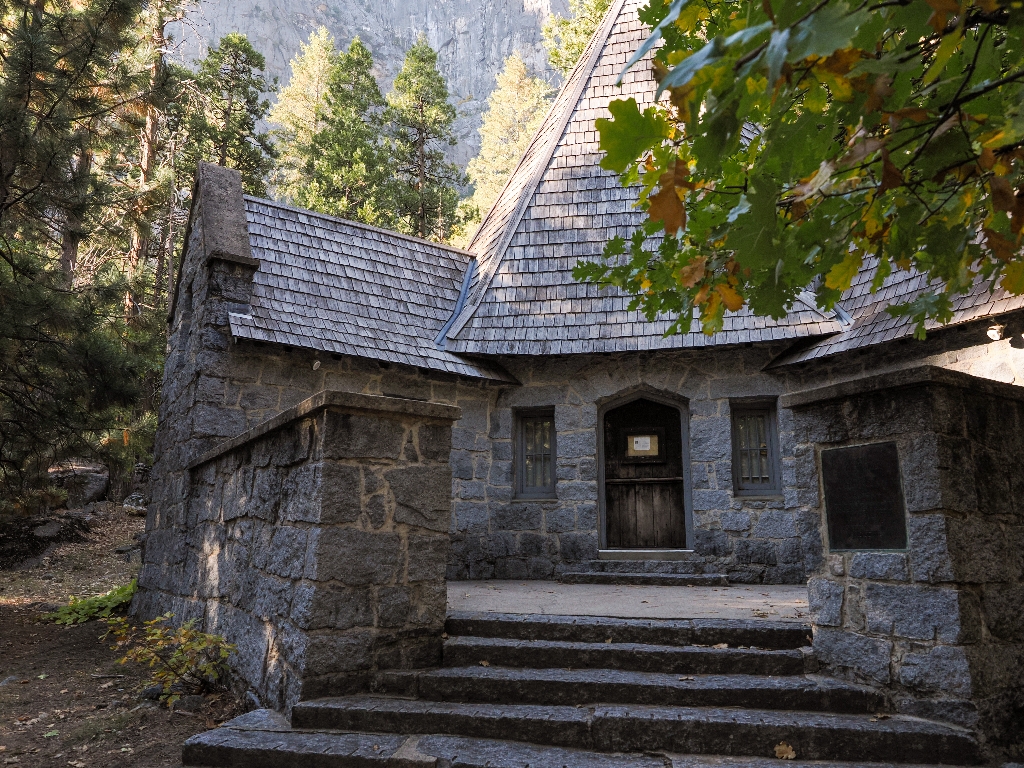
Constructed before the establishment of the rustic design guidelines, the Yosemite Conservation Heritage Center is an example of Tudor Revival architecture, a style not seen anywhere else within the national park system. The lodge is a transitional structure of strong European roots combined with the revolutionary way that Bay Area environmental designers used building materials.
The lodge was built by the Sierra Club in 1903 at the base of Glacier Point at a cost of approximately $5,000. As Camp Curry expanded, the lodge was rebuilt in its current location in 1919.
Architect John White donated his time to design the lodge. The building displays distinctive features of the First Bay Tradition, including its steeply pitched roof, emulating Yosemite Valley’s steep granite walls, and its use of local materials, such as granite and timber. The building’s steep roof pitch, masonry walls, and prominent chimney are also distinguishing features of the Tudor Revival style. The interior has a highly unusual, exposed roof structure of hammer beams supporting scissors trusses. The central fixture of the main lodge room is its massive stone fireplace.
During relocation and rebuilding, contractors removed the roof and rebuilt the rest of the lodge in its new location using John White’s drawings. Some elements such as windows appear to have been salvaged and reused in the new building. Rough‐cut granite was brought from Madera County for the reconstructed lodge walls.
Is there something we missed for this itinerary?
Itineraries across USA


















































